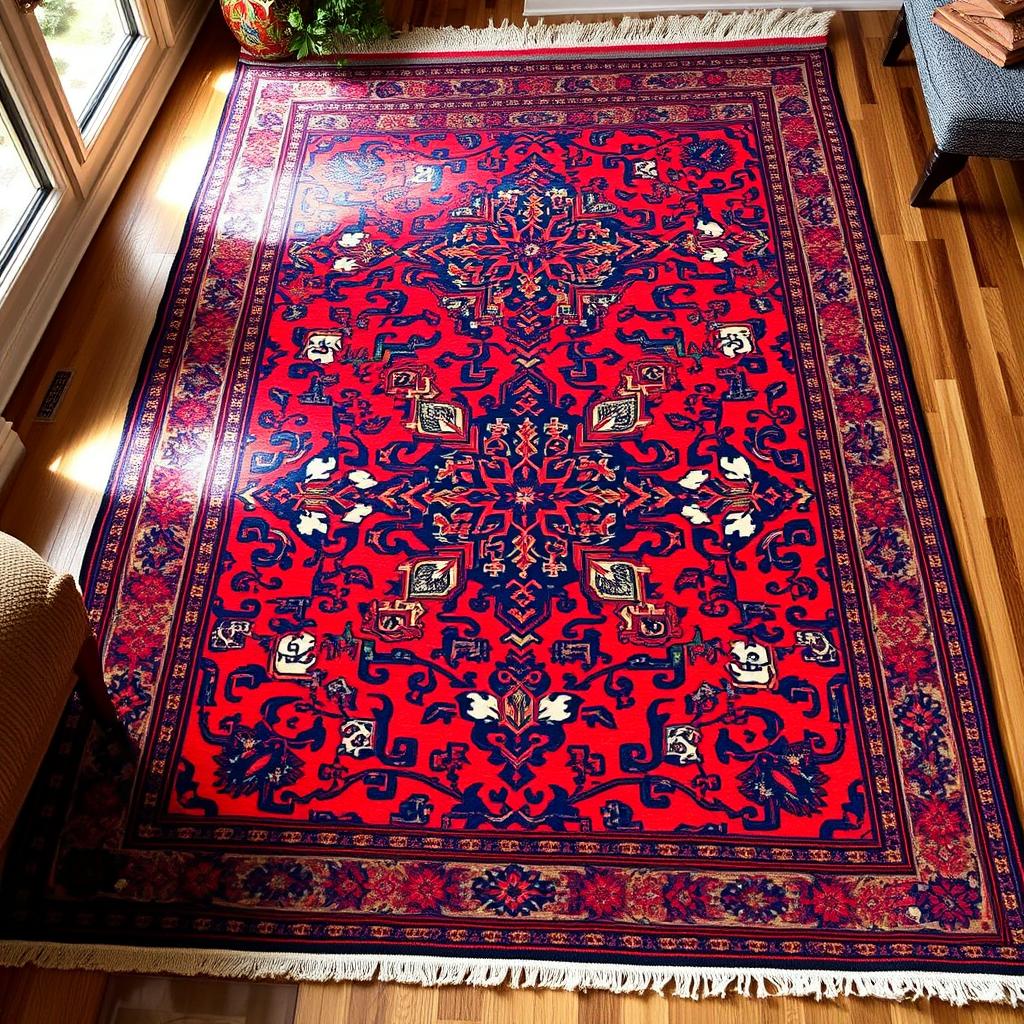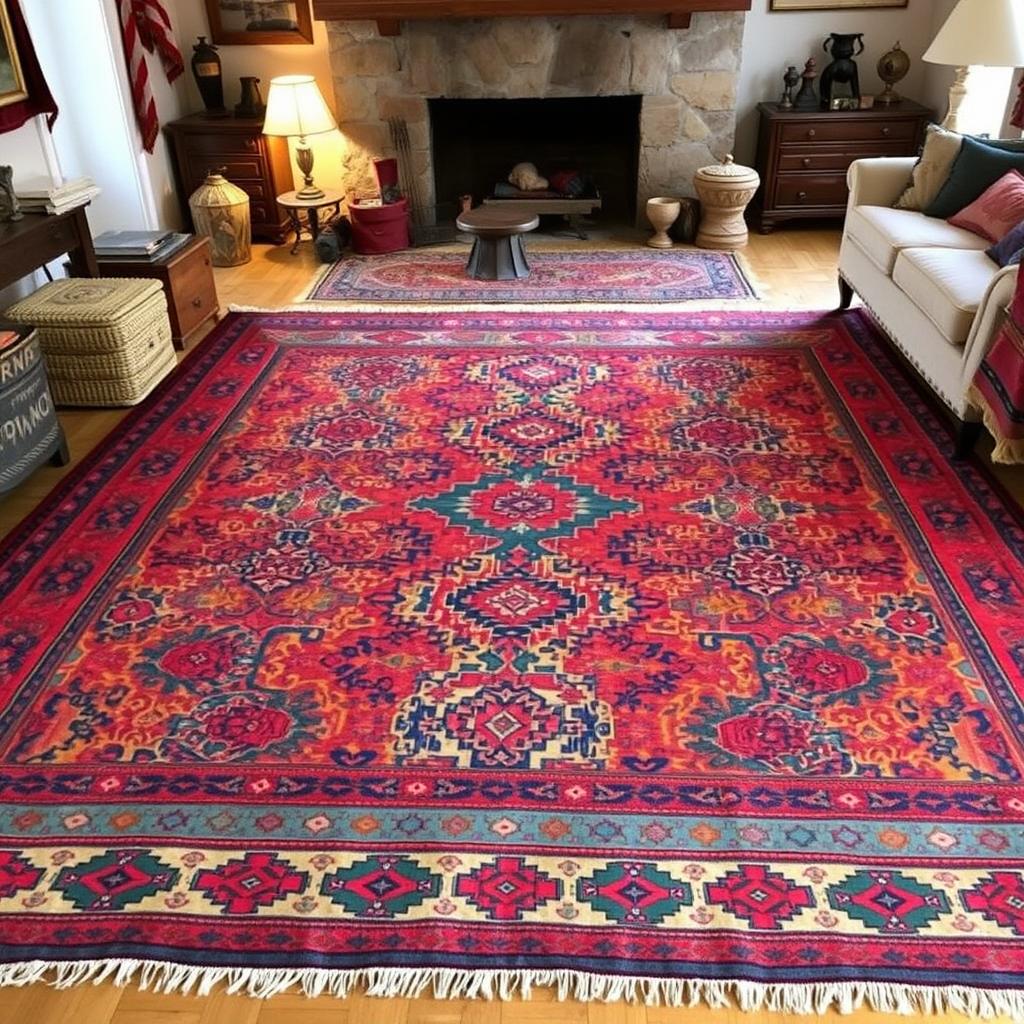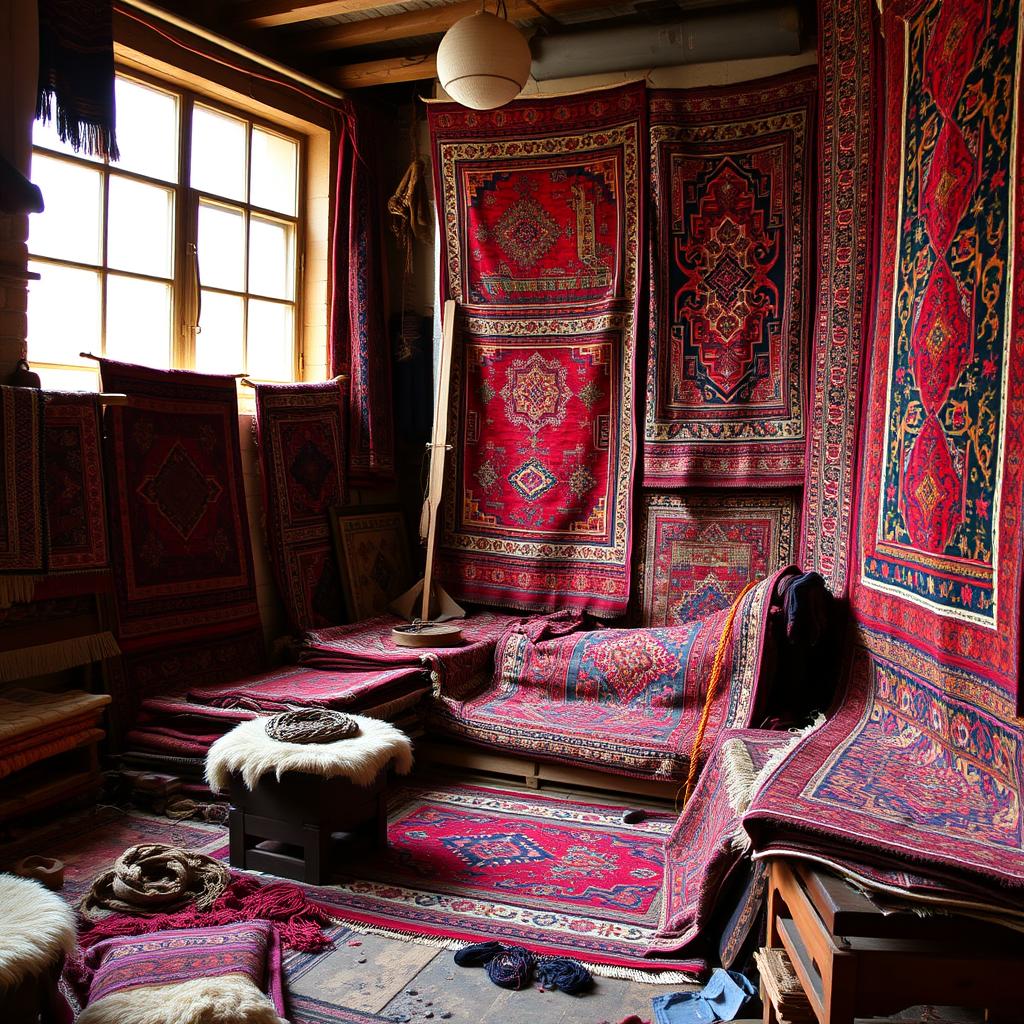The Afghan carpet is a true masterpiece of traditional craftsmanship. It has a rich heritage that has captivated the world for centuries. These handmade rugs, born from the skilled hands and vibrant imaginations of Afghan artisans, have become synonymous with the country’s cultural identity. They reflect the stories and traditions that have been passed down through generations. Beyond their stunning visual allure, Afghan carpets are renowned for their exceptional quality.
Click to use Silverigroup personal shopper services
They are known for their intricate designs and the use of premium natural materials. From the ancient tribal patterns to the modern interpretations, these captivating textiles offer a window into the heart and soul of Afghanistan. A nation with a long and storied history of carpet weaving excellence.
Key Takeaways:
- Afghan carpets are renowned for their exceptional quality, intricate designs, and the use of premium natural materials.
- These handmade rugs reflect the rich cultural heritage and traditions of Afghanistan, passed down through generations.
- Afghan carpets are highly sought-after globally, prized for their unique artistry and craftsmanship.
- The article will explore the ancient origins, evolving designs, and traditional weaving techniques that make Afghan carpets a true treasure of the Orient.
- Understanding the distinct features and production process of Afghan carpets will provide readers with a deeper appreciation for these captivating textiles.
Click to buy antique rugs from Silverigroup
The Rich Heritage of Afghan Carpet Making
The Afghan carpet is a timeless piece of art, deeply rooted in Afghanistan’s rich cultural heritage. It traces its origins back to ancient civilizations. Over centuries, the art of traditional carpet weaving in Afghanistan has evolved, reflecting the country’s rich history and diverse influences.
Ancient Origins and Cultural Significance
The Afghan carpet-making tradition dates back to the ancient Bactrian and Kushan empires. These empires once dominated the regions of modern-day Afghanistan. They were known for their intricate textile designs, which were deeply symbolic and integral to their way of life.
The Afghan carpet became a cherished part of the country’s cultural identity. It served as a canvas for expressing the stories, beliefs, and traditions of its people.
Evolution Through Centuries
Over the centuries, the Afghan carpet has evolved, reflecting the diverse influences that have shaped the country’s history. The Silk Road connected Afghanistan to neighboring cultures. This connection influenced the designs and techniques of the oriental rug.
As a result, the designs and techniques of the oriental rug were influenced by the artistic traditions of Persia, Central Asia, and even China. This cross-pollination of ideas and aesthetics led to the development of distinct regional styles. Each style had its own unique traditional carpet weaving patterns and color palettes. Today, the Afghan carpet continues to be a cherished symbol of Afghanistan’s cultural identity. Its timeless designs and intricate craftsmanship capture the essence of the country’s vibrant heritage.

Understanding the Afghan Carpet Craftsmanship
At the heart of the captivating world of handmade rugs lies the intricate craftsmanship that defines the timeless Afghan carpet. This centuries-old tradition shows the skill and dedication of the region’s master weavers. They pour their artistry into every intricate knot and vibrant color.
The hallmark of an authentic Afghan carpet is the meticulous hand-knotting technique. This labor-intensive process can take months, even years, to complete. Each knot is tied by hand, creating a durable and resilient fabric that can last for generations.
At the heart of this craft are the skilled artisans. Their nimble fingers and keen eyes transform raw materials into true masterpieces. They blend technical expertise with a deep cultural understanding to produce carpets that are stunning and rich in heritage.
The process of creating an Afghan carpet is a true labor of love. It requires unwavering patience, meticulous attention to detail, and a deep respect for time-honored techniques. From the careful selection of premium materials to the intricate knotting and dyeing techniques, every step is a testament to the artistry and craftsmanship.

Traditional Materials Used in Afghan Carpets
Afghan carpets are loved for their detailed designs and top-notch materials. The key material is premium wool from local sheep. This wool makes the carpets soft, luxurious, and very durable.
Premium Wool Selection
Afghan carpet makers are known for their careful wool selection. They use the best wool from Karakul and Ghilzai sheep, found in Afghanistan’s tough terrain. This wool is soft, shiny, and strong, making each wool carpet last long.
Natural Dye Sources
The vibrant colors of Afghan carpets come from natural dyes. Weavers use plants like madder root, indigo, and pomegranate rind. These vegetable dyes make the afghan carpet look amazing and last long. They also show the carpet’s connection to the land.
Quality of Materials
Afghan carpet makers focus on quality and skill. They carefully card, spin, dye, and weave the wool. This hard work makes each carpet a masterpiece, ready to inspire for years.

Distinctive Patterns and Motifs
Afghan carpets are filled with intricate patterns and motifs. These designs have been part of Afghan rugs for centuries. Each pattern tells a story of the country’s culture and art. Geometric patterns are a big part of Afghan carpets. You’ll see interlocking shapes and sharp angles. These designs add energy and hold spiritual meaning.
Floral motifs are also common in Afghan carpets. They range from vine-like scrolls to delicate blooms. These designs reflect the beauty of Afghanistan’s nature. Symbolic elements like the tree of life, sun, and birds of paradise are woven into the carpets. They symbolize fertility, prosperity, and the connection of all living things. Afghan carpets showcase the country’s rich culture and traditional carpet weaving traditions.
Types of Afghan Carpet Designs
Afghan carpet designs are a mix of tribal and regional styles. They range from the detailed ghazni rugs to the bold turkmen carpet patterns. Each design shows the culture and skill of its makers.
Tribal Patterns
Afghan tribal carpets show the talent and traditions of the country’s many groups. The baluchi carpet stands out with its diamond shapes and bright colors. It uses natural dyes, showing the nomadic life of the Baluch people.
Regional Variations
Some Afghan carpets are tied to certain areas. Ghazni rugs, from the historic city of Ghazni, have detailed floral designs and soft colors. Turkmen carpets, from the north, have bold, geometric shapes, influenced by Central Asia.
Modern Interpretations
The Afghan carpet world is changing, with new weavers mixing old and new. They use classic designs with modern colors and shapes. This creates a blend of old skills and new ideas.
| Carpet Design | Distinguishing Features | Regions |
|---|---|---|
| Ghazni Rugs | Intricate floral patterns, subdued colors | Ghazni |
| Turkmen Carpets | Bold, geometric designs, vibrant colors | Northern provinces |
| Baluchi Carpets | Diamond shapes, natural dyes, vibrant colors | Baluchistan |

The Afghan Carpet Weaving Process
The art of making Afghan carpets is a tradition passed down for generations. It starts with choosing the best wool and ends with patterns that show off the culture. This process shows the skill and creativity of Afghan artisans. In settled communities, making carpets is a family affair. Women prepare the wool by washing, carding, and spinning it. Men set up the loom and weave the carpets.
Nomadic weaving is different. Weavers from the same tribe or clan work together. They make stunning handmade rugs as they travel. Their designs tell stories of their nomadic life. Every Afghan carpet is made with love and care. From preparing materials to the final touches, each step is done with precision. This ensures every Afghan carpet is a unique piece of history.
Notable Afghan Carpet Production Regions
Afghanistan’s carpet-making tradition is rich and varied. It spans different geographic regions, each known for its unique afghan carpets. From Herat in the west to Kabul and Mazar-i-Sharif in the north, each place has its own style. These styles add to the amazing variety of what do we know about the afghan carpet.
Major Weaving Centers
Herat is famous for its handmade rugs with detailed floral designs. These carpets are known for their high quality and fine details. Kabul, the country’s heart, blends traditional and modern designs in its afghan carpet industry.
Regional Specialties
- Mazar-i-Sharif is known for its bold tribal patterns and geometric designs. These reflect the region’s nomadic roots.
- Kunduz carpets are famous for their bright colors and wildlife scenes. They show the area’s natural beauty.
- In the south, Kandahar’s afghan carpets depict local plants and animals. They highlight the region’s cultural richness.
These regional specialties, shaped by tradition and innovation, make what do we know about the afghan carpet so diverse and appealing.
Identifying Authentic Afghan Carpets
Exploring the world of oriental rugs can be exciting but also challenging. Finding authentic Afghan carpets is especially tricky. These handmade wonders are known for their deep history, detailed designs, and exceptional craftsmanship. But, with more fake copies around, it’s key to know how to spot the real deal.
The first clue is the knot density. Real Afghan carpets have a high knot count, usually between 100 to 200 knots per square inch. This high detail makes the carpet strong and adds to its beautiful patterns and colors. The materials used are also a big clue. True Afghan carpets are made from top-quality wool from Bactrian camels. These fibers are dyed naturally, giving the carpet its rich colors and depth.
| Characteristic | Authentic Afghan Carpet | Imitation |
|---|---|---|
| Knot Density | 100-200 knots per square inch | Typically lower, less than 100 knots |
| Material | Premium wool, natural dyes | Lower-quality fibers, synthetic dyes |
| Design | Intricate, traditional patterns | Simplified or mass-produced designs |
The design of an authentic Afghan carpet is another key feature. These carpets show off intricate, traditional patterns that reflect the region’s culture. From the geometric designs of the Turkmen to the colorful motifs of the Baluch, each pattern has a story to tell.
Knowing the signs of a real Afghan carpet helps buyers make informed choices. This way, they can find a carpet that truly represents the region’s artistry and skill.

Care and Maintenance of Afghan Carpets
Keeping your wool carpets and handmade rugs from Afghanistan looking great is key. With a few easy steps, your Afghan carpet will stay a beloved part of your home for many years.
Cleaning Methods
It’s important to vacuum your Afghan carpet regularly to get rid of dust and dirt. For a deeper clean, it’s best to take it to a professional rug cleaning service. They know how to clean wool carpets without harming them.
Storage Recommendations
- Keep your Afghan carpet in a cool, dry spot away from sunlight.
- Don’t fold or crease the carpet. Roll it gently and lay it flat instead.
- Use acid-free tissue paper or a breathable fabric to cover the carpet while it’s stored.
- Check the carpet often for pests or moisture. Fix any problems right away to stop damage.
By following these care tips, your Afghan carpet will be a treasured family heirloom for years. It will show off the beautiful handmade rugs tradition of Afghanistan.
The Global Market for Afghan Carpets
The Afghan carpet industry is big, with these beautiful textiles wanted all over the world. Known as “oriental rugs,” they are loved for their skill, bright colors, and designs that show Afghanistan’s rich culture.
Big buyers of Afghan carpets are the United States, European countries, and places like China and the Middle East. Prices vary a lot, from a few hundred dollars to tens of thousands for rare or antique ones. The cost depends on the materials, design complexity, and the weavers’ skill.
Afghan carpets are key to the country’s economy, giving jobs and income to many artisans and their families. But, they face challenges like fake imitations, price changes, and political issues. Still, their beauty keeps them in demand, showing Afghanistan’s artistic spirit.
“The Afghan carpet is a testament to the ingenuity and resilience of the Afghan people, weaving their cultural narratives into every intricate knot.”
Modern Innovations in Afghan Carpet Making
The art of making Afghan carpets has lasted for centuries. Now, the industry is using new ideas to stay fresh and competitive. Carpet makers in Afghanistan mix old techniques with new ones. This creates beautiful handmade rugs that people all over the world love.
Contemporary Adaptations
Carpet weavers keep the traditional designs but add new touches. They use modern patterns, colors, and shapes. This makes the Afghan carpet a popular choice for home decor today.
Sustainable Practices
The handmade rugs industry in Afghanistan is focusing on being green. They use natural dyes and materials that are good for the planet. This makes the carpets more valuable and eco-friendly. By combining old skills with new ideas, the Afghan carpet industry is ready for the future. It will continue to impress people everywhere with its beauty and craftsmanship.
Conclusion
The Afghan carpet is a centuries-old art form that holds a special place in Afghan culture and the global rug market. It showcases the resilience and creativity of the Afghan people. The Afghan carpet is not just a floor covering; it’s a piece of history and art.
Each rug tells a story, with patterns that reflect the country’s rich traditions. These handmade rugs offer a peek into Afghanistan’s diverse culture. They range from tribal patterns in the north to regional specialties in the south. It’s important to celebrate and preserve this art form for the future. By supporting Afghan weavers and appreciating their work, we help keep the Afghan carpet alive. Together, we can honor the past, enjoy the present, and ensure the Afghan carpet is loved for years to come.
FAQ: What do we know about the Afghan carpet?
What is the history and cultural significance of Afghan carpets?
Afghan carpets have a long history, dating back to ancient civilizations along the Silk Road. They are a symbol of Afghan culture, showing the country’s rich heritage and the skill of its weavers.
What makes the craftsmanship of Afghan carpets so unique?
The hand-knotting of Afghan carpets is a time-consuming process. It requires great skill and patience from the weavers. This makes the rugs durable and highly valued.
What types of materials are used in Afghan carpet production?
Afghan carpets use high-quality wool from local sheep. The wool is dyed with natural sources like plants and minerals. This careful process gives the carpets their unique colors and durability.
What are the most common patterns and motifs found in Afghan carpets?
Afghan carpets feature a wide range of patterns and motifs. These designs reflect the cultural and historical influences of the regions. You’ll see geometric shapes, floral patterns, and symbols with deep cultural meaning.
How do the different regions of Afghanistan contribute to the diversity of carpet designs?
Different regions in Afghanistan, like Ghazni, Turkmen, and Baluchi, have their own styles. These styles are shaped by local traditions, materials, and weaving techniques. This diversity creates a rich variety of Afghan carpet designs.
What steps are involved in the Afghan carpet weaving process?
Making an Afghan carpet is a long process. It starts with preparing the wool and ends with the final touches. The steps vary between settled and nomadic traditions, but all require a lot of time and skill.
How can one identify an authentic Afghan carpet?
To spot a real Afghan carpet, look at the knot density, material quality, and design. Knowing these features helps distinguish Afghan carpets from others and avoid fakes.
What are some best practices for caring and maintaining Afghan carpets?
To keep Afghan carpets in good shape, use gentle cleaning methods and follow storage tips. This protects the carpets from damage and keeps them looking great.
What is the global market for Afghan carpets, and what challenges do Afghan carpet makers face?
Afghan carpets are popular worldwide, with many countries importing them. However, makers face challenges like economic issues, competition, and adapting to new tastes while keeping traditional methods.
How are Afghan carpet makers incorporating modern innovations and sustainable practices?
Afghan carpet makers are embracing new ideas and eco-friendly practices. They’re adding modern touches while still using traditional techniques. They’re also using green dyes and production methods.

